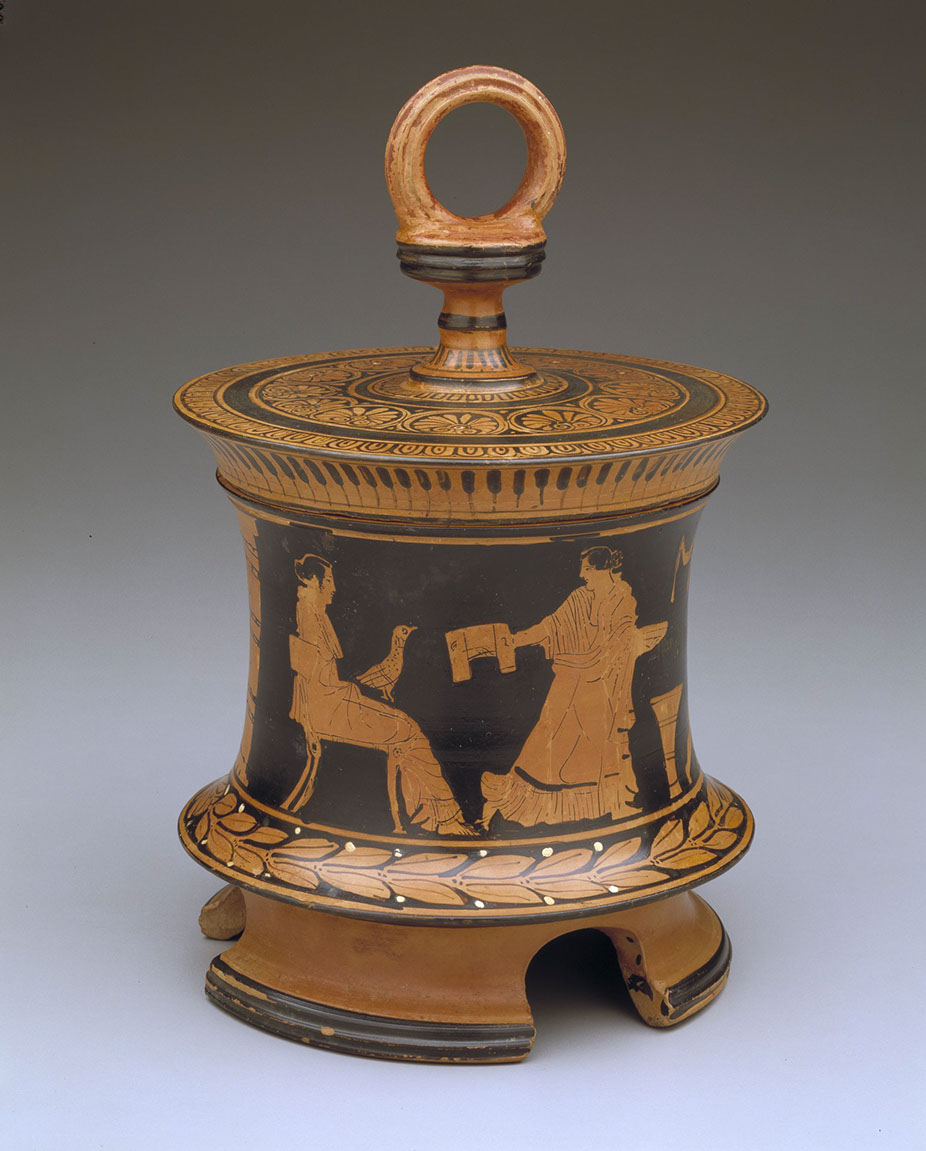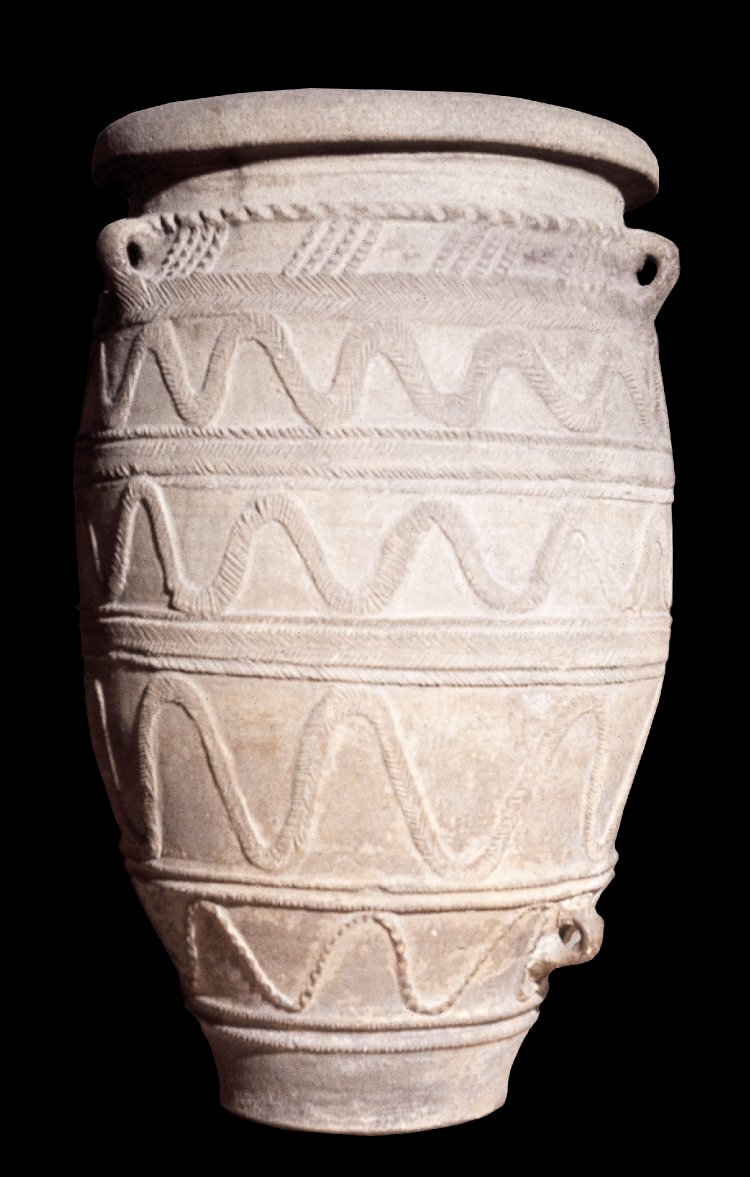Lots of societies have myths about a perfect time in the past which gave way to the difficulties of the present. The story of Pandora is part of the Greeks’ myth expressing this idea. The earliest known versions of the story appear in the poetry of Hesiod. He wrote in the 8th century BCE, before the development of democracy or the spectacular temples we associate with ancient Greece, and the myth was probably extremely old even then. In Hesiod’s version, Pandora was the first human woman (see Works and Days lines 50-105, and Theogony 560-616). She was created by the gods and sent amongst men to punish them for learning to control fire (something only gods knew beforehand). The gods gave Pandora a pithos jar (not a box) filled with sorrows and pains. When she arrived amongst men, she took the lid from the vase and all the difficulties of life emerged, leaving only hope behind.
Aberdeen Painter pyxis.

© Dallas Museum of Art, gift of the Junior League of Dallas. 1968.28.A-B
In Hesiod’s version of the myth, Pandora is made of earth and water. Vase painters sometimes showed Pandora being born from the earth and 'Pandora’ was also a cult name for Gaia, the earth goddess.
As well as expressing the end of a perfect time, the myth is probably related to a spring festival, the Anthesteria, in which jars of new wine were opened and potentially malevolent ghosts were thought to rise through the earth to move amongst the living for a short time before (hopefully) returning to the realm of the dead.
The story of Pandora was passed down through the ages, and scholars copied out Hesiod’s poems so that they were never lost. In the sixteenth-century CE, Desiderius Erasmus wrote about Pandora’s pyxis 'box’, rather than her pithos. It caught on; soon it became common to read about 'Pandora’s box’ and people began to forget about Pandora’s birth from the earth.
Minoan pithos jar

© Trustees of the British Museum. BM 1884.0807.1
Writers also began saying that Pandora was told not to open the 'box’, and that she did so out of disobedience and curiosity. This adds an extra layer of moralism to the story, suggesting that as well as causing trouble, women lack self-control. If anything, the story was getting more misogynistic over time!
